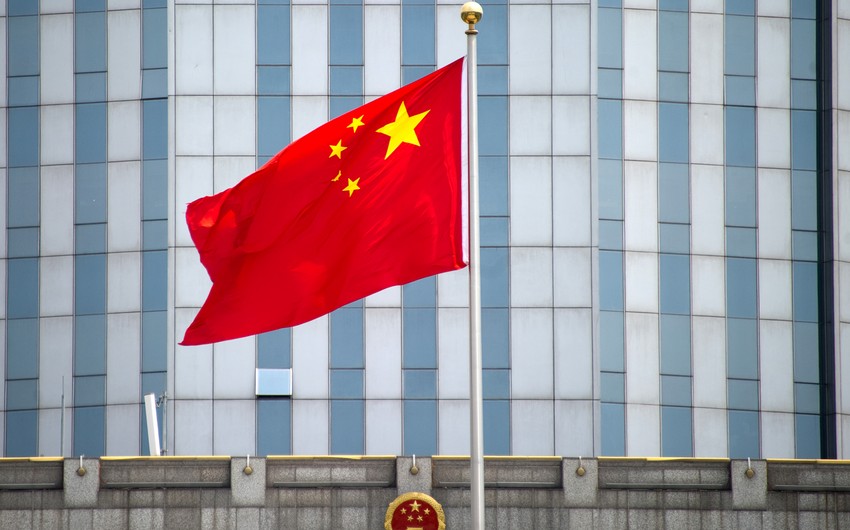China's economy picked up speed in the fourth quarter, with growth beating expectations as it ended a rough coronavirus-striken 2020 in excellent shape and remained poised to expand further this year even as the global pandemic raged unabated, Report mentions, citing TASS.
The world's second-largest economy has surprised many with the speed of its recovery from the coronavirus jolt, especially as policymakers have also had to navigate tense US-China relations on trade and other fronts.
According to new figures released on Monday, China's economy grew by 2.3 percent in 2020, in a dramatic turnaround since the coronavirus pandemic ravaged the country in the early part of the year.
The annual growth rate was the lowest since the Chinese economy shrank by 1.6 % at the end of the Cultural Revolution in 1976.
However, it comes as other countries struggle to contain the pandemic's effects, with China expected to be the only major economy to have expanded in 2020.
A significant acceleration highlighted the dramatic rebound over the last three months of 2020. China's economy grew by 6.5 percent from a year earlier, ahead of analysts' forecasts of 6.2 percent growth, the National Bureau of Statistics (NBS) announced on Monday.
It meant that quarterly growth was higher than the 6.0 percent reported in the fourth quarter of 2019 before the virus's effects took hold. It was also a remarkable shift from the first quarter of 2020, when the economy suffered a dramatic collapse, shrinking by 6.8 percent, in the first quarterly shrinkage since records began.
Ning Jizhe, the head of the NBS, said that "the main targets of economic and social development [in 2020] have been completed better than expected".
"China is expected to become the only one major economy in the world to achieve positive economic growth throughout the year," said Ning, adding that quarterly GDP growth "has returned to the normal level."
That the size of the Chinese economy also topped 100 trillion yuan (US$15.4 trillion) for the first time last year marked another symbolic win for the Chinese Communist Party.
Industrial production, which gauges China's output in manufacturing, mining, and utilities, grew by 2.8 % last year, down from 5.7 % in 2019.
Compare this to retail sales, a key indicator of consumer spending in the world's most populous nation, which contracted by 3.9 percent last year, down from 8.0 percent growth in 2019. In December 2020, retail sales disappointed again, with 4.6 % growth from a year earlier, missing analysts' forecasts of 5.5 % growth.
The slowing of the pace of consumption again raises questions about the outlook for consumer spending amid the impact of one of the worst coronavirus outbreaks since the spring last year on consumption during the upcoming Lunar New Year festival.
"Following new government restrictions amid Covid-19 outbreaks in two provinces, reduced confidence and travel during the Chinese New Year holidays in February could hamper first-quarter growth. However, at least for now, we think the risk of major economic impact is low, given China's track record of containing outbreaks," said Louis Kuijs, Asia Pacific analyst at Oxford Economics.
In a break from tradition, China did not set an economic growth target for 2020as it dealt with the virus's fallout. However, it set targets for job creation and unemployment, both of which were surpassed, Monday's data release showed.
Beijing set a target of creating 9 million new urban jobs in 2020, compared with 11 million in 2019. Monday's data release said that there were 11.86 million new urban jobs created in China last year, 131.8 percent of the target. For the whole of 2020, China's surveyed jobless rate was 4.7 percent compared with 5.5 percent the previous year.
The statistics bureau also released economic data covering the final month of 2020 on Monday, showing that growth remained relatively healthy, even as some engines eased off.
In December, industrial production grew by 7.3 percent from a year earlier, beating analysts' forecasts of 6.9 %and up from
7.0 percent in November.
Retail sales grew by 4.6 percent last month compared to December 2019, well below analysts' forecasts for a gain of 5.5 percent. Nonetheless, this still marked the fifth successive month of expansion, with retail sales have grown by 5.0 % in November.The surveyed jobless rate, imperfect measurement of unemployment in China, which does not include figures for the tens of millions of the nation's migrant workers, stood at 5.2 percent in December, unchanged from November.
Fixed asset investment grew by 2.32 percent in December, while for the whole year of 2020, it expanded by 2.9 % compared to 5.4 percent in 2019.
"We think the outlook remains bright in the near-term. Despite the latest dip in retail sales, we see plenty of upside to consumption as households run down the excess savings they accumulated last year. Meanwhile, the tailwinds from last year's stimulus should keep industry and construction strong for a while longer," wrote Julian Evans-Pritchard at Capital Economics in a note.


 https://static.report.az/photo/ae2513f8-e5d6-3b92-bab3-146a9cba5fb0.jpg
https://static.report.az/photo/ae2513f8-e5d6-3b92-bab3-146a9cba5fb0.jpg

